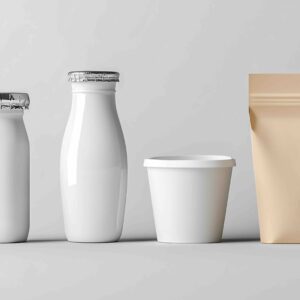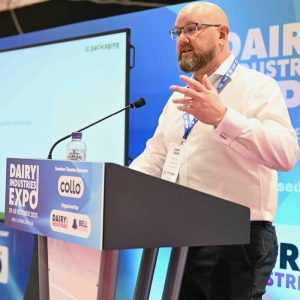Dairy is tops in plastic recycling, says Wrap at EXPO

Credit: WRAP
The UK Plastic Pact has seen the dairy industry be a leading industry on sustainable packaging, according to Paddy Duggan of NGO Wrap, speaking at the Dairy Industries Expo at NAEC Stoneleigh last week. Wrap examines sustainability challenges through the lens of people’s day-to-day lives globally. The pact is now in large areas of the planet, with both national and regional pacts. There are four fundamental targets: for all plastic packaging to be recyclable, reusable or compostable, to have 30% average recycled content, bottle to bottle, by end of 2025, and have 70% of plastic effectively recovered from market. In dairy, examples of moving to single materials, recycling content and polymer switching have included grated and block cheese, milk bottles and the removal of PVdC and polystyrene. In a few weeks, Wrap will report on the progress made in the various industries.
One success story is removing most of the problematic items from the waste stream, such as straws. While the target dates of the end of 2025 might not be fully reached (partly due to Covid), the goals have been optimised, and people are looking to scale, reuse and refill, support circular infrastructure and harmonise the data.
“The dairy industry is one of the big workhorses towards these targets. Milk bottles are collected by every local authority, as recycling these began in the late 90s, and this was led by the dairy industry. Most of the dairy customers have 30-40% recycled content in their bottles. It is more expensive than virgin polymer but they also now have caps that are the same colour as the bottle – now the bottled water sector is copying this. Dairy led that trend. noticed globally.
In yogurt pots, polystyrene use has moved to PP or PET. In Northern Ireland, Yogi the yogurt pot has promoted the removal of PVdC and the drive to mono materials. For grated and block cheese, there has been a massive move into mono materials. Another area is the milk and yogurt sticks, which are moving to recyclable materials. A further focus for the sector is now plastic packaging for laundry detergent and home care, looking at contaminants in packaging, and the development of how to get materials through the system. “What’s a realistic dose? We’ve been documenting the testing of feedstocks, refining it and offering guidance,” Duggan observes.
In the future, there will be examination of bottle labels, as well as having one portion of the UK, Northern Ireland, be compliant with EU formats. However, Duggan notes that Wales is the second best recycler globally, with the amount going to landfill reducing. As more recycled polymers have higher quality, the use of them is also increasing.






